From History archives, year-2022
Keynote speeches
Keynote speeches from scientists of German, Sweeden, Finland and Greece leading universities will be given during all three days—see the entire IEEE ICTfest program.
IEEE ICTfest program
05.10.2022
RTU, Zunda krastmala 10, room 104, Riga
- 09:00 – 09:30 Registration
- 9:30 – 09.45 IEEE Day & ICTfest Celebration Opening (https://events.vtools.ieee.org/m/325532)
- 09:45 – 10.30 Keynote Speech Prof. Yury Shestopalov (Högskolan i Gävle) – Resonance scattering and cloaking: unified mathematical approach and model (https://events.vtools.ieee.org/m/324760)
- 10:30 – 11:15 Keynote Speech Prof. Oscar Quevedo-Teruel (Royal Institute of Technology – KTH) – Glide symmetries: a new degree of freedom for the design of periodic structures (https://events.vtools.ieee.org/m/324761)
- 11:15 – 12.00 Keynote Speech Prof. Dr.-Ing. Ingo Gaspard (Hochschule Darmstadt – University of Applied Sciences) – Measurement, modelling and simulation of polarization properties of the indoor radio channel at microwave frequencies and below (https://events.vtools.ieee.org/m/324762)
- 14:30 – 18.30 IEEE Lithuania and Latvia Sections Workshop on Microwave Device and Systems (https://events.vtools.ieee.org/m/324763)
In-person program | ||
IEEE Lithuanian and Latvian Workshop on Microwave device and systems. RTU, Zunda krastmala 10, room 104, Riga | ||
Time | Title | Presenter |
14:30 | Opening speech | Dr. Anna Litvinenko (IEEE Latvia Section) and Dr. Borisas Levitas (IEEE Litvhuania Section) |
14:40 | FMCW Through-Wall Imaging Radar - Signal Processing Using Deep Neural Networks | Dr. Eldar Šabanovič (Vilnius Gediminas Technical University) |
15:10 | Challenges of Experimental Implementation of Multi-Hop Wireless Energy Transfer | Dr. Janis Eidaks (Riga Technical University, Insitute of Radioelectronics) |
15:40 | Magnetic Field Meters Based on Magnetoresistive Sensors for Measurement of Microsecond Duration Magnetic Field Pulses | Prof. Dr. Nerija Žurauskienė (Center for Physical Sciences and Technology Department of Functional Materials and Electronics) |
16:10 | Uncertainty Reduction in the Measurments of the Dielectric Constant of Low-Loss Materials Using High Sensitivity Measurments Models | Romans Kusnins (Riga Technical University, Insitute of Radioelectronics) |
16:40 | Coffe pause | RTU, Azenes street 12-1, room 114, Riga |
17:00 | On Software Defined Radio Issues | Dr. Manfred Sneps-Sneppe ( Ventspils International Radio Astronomy Centre) |
17:30 | 2.5-to-30 GHz ps Oscilloscopes for wide- bandwidth measurements | Jakov Rososkis (Eltesta Ltd) |
18:00 | Picosecond-precise time-tag measurements technology | Viktors Kurtenoks (Eventech Ltd) |
- 19.00 – 21.00 Organization Committee meeting of IEEE Lithuania and Latvia Sections Workshop on Microwave Device and Systems
06.10.2022
RTU, Zunda krastmala 8, room 107, Riga
- 08:30 – 09:00 Registration
- 09:00 – 09.50 Plenary Session of IEEE International Information and Communication Technologies Festival, International Scientific Conference on Information Technology and Management Science, International Workshop on Microwave Theory and Techniques in Wireless Communication (https://events.vtools.ieee.org/m/324766)
- 10:15 – 11.00 Keynote Speech Prof. Dr. Christoph Krauß (Hochschule Darmstadt – University of Applied Sciences) – Security and Privacy Solutions for Electric Vehicle Charging (https://events.vtools.ieee.org/m/324768)
- 11:00 – 11.45 Keynote Speech Prof. Olaf Maennel (Tallinn University of Technology) – The evolving world of cyber-operations (https://events.vtools.ieee.org/m/324769)
RTU, Zunda krastmala 10, room 505 and 506, Riga
- 13:30 – 18.30 International Scientific Conference on Information Technology and Management Science
________________________________________________________________________________________
RTU, Azenes street 12, room 201, Riga
- 13:30 – 18.30 International Workshop on Microwave Theory and Techniques in Wireless Communication (https://events.vtools.ieee.org/m/324771)
- 18.00 – 21.00 ICTFest Gala Dinner (Riga Islande Hotel – Kipsalas street 2)
In-person program, 2022.10.06 | ||
IEEE Lithuanian and Latvian Workshop on Microwave device and systems. RTU, Azenes street 12, room 201, Riga | ||
Time | Title | Presenter |
13:30 | UWB Time Domain Mesurement Technology | Dr. Borisas Levitas (Geozondas Ltd) |
In-person program, 2022.10.06 | ||||
Section : Wireless communications (RTU, Azenes street 12, room 201, Riga). Chairs: Anna Litvinenko | ||||
Time | N# | Title | Authors | Presenter |
14:00 | 842 | Experimental Study on Frequency Modulated Chaos Shift Keying Communication System | Darja Cirjulina, Ruslans Babajans, Deniss Kolosovs and Anna Litvinenko | Darja Cirjulina |
14:15 | 1392 | Quadrature Chaos Phase Shift Keying Communication System Based on Vilnius Chaos Oscillator | Ruslans Babajans, Darja Cirjulina, Deniss Kolosovs and Anna Litvinenko | Ruslans Babajan |
14:30 | 1709 | Demonstration of polarization optical-time-domain reflectometer for monitoring of optical fiber lines | Janis Braunfelds, Sandis Spolitis, Lilita Gegere, Dmitrijs Pikulins, Vsevolods Stepanovs and Andis Supe | Andis Supe |
14:45 | 3366 | Encapsulated and anonymized network video traffic classification with generative models | Tianhua Chen, Elans Grabs, Ernests Petersons, Dmitry Efrosinin, Aleksandrs Ipatovs, Janis Kluga and José S. Lozano | Tianhua Chen |
15:00 | 5617 | YOLOv5 Deep Neural Network for Quince and Raspberry Detection on RGB Images | Kaspars Sudars, Ivars Namatēvs, Jānis Judvaitis, Rihards Balašs, Artūrs Ņikuļins, Astile Peter, Sarmīte Strautiņa, Edīte Kaufmane and Ieva Kalniņa | Astile Peter |
15:15 | 5728 | Performance study of chaos-based DSSS and FHSS multi-user communication systems | Nikolajs Hasjuks, Horst Hellbruck and Arturs Aboltins | Nikolajs Hasjuks |
15:30 | 9974 | Picosecond pulse expansion using the low-pass filter in event timer-based PPM communication system | Tatjana Solovjova, Janis Semenako, Dmitrijs Prigunovs, Dilan Ortiz, Sandis Spolitis and Arturs Aboltins | Tatjana Solovjova |
15:45-16:15 | Coffee pause
| |||
In-person program, 2022.10.06 | ||||
Section : Microwave techniques and signal propagation (RTU, Azenes street 12, room 201, Riga). Chairs: Tatjana Solovjova, Dmitrijs Pikulins | ||||
Time | N# | Title | Authors | Presenter |
16:15 | 132 | Electrode Comparison for Heart Rate Detection via Bioimpedance Measurements | Didzis Lapsa, Rimas Janeliukštis and Atis Elsts | Didzis Lapsa |
16:30 | 2376 | Linearity/efficiency trade-off according to back off for HPA GaN using mm-Wave modulated signals | Lucas Letailleur, Martine Villegas, Ahmad Al Hajjar and Charles Edoua Kacou | Lucas Letailleur |
16:45 | 4303 | Multi-Hop RF Wireless Power Transfer for Autonomous Wireless Sensor Network | Janis Eidaks, Romans Kusnins, Deniss Kolosovs, Ruslans Babajans, Darja Cirjulina, Pavels Krukovskis and Anna Litvnenko | Janis Eidaks |
17:00 | 6347 | COMPARISON OF THE SIMPLEST WAYS TO REDUCE EMI RADIATED EMISSIONS FOR PROTOTYPED DEVICE | Dmitrijs Culkovs, Elans Grabs, Aleksandrs Ipatovs, Ernests Petersons, Nikolajs Bogdanovs and Arnis Ancans | Dmitrijs Culkovs |
17:15 | 7789 | Determination of Delay Parameters in 4G LTE Cellular Mobile Networks | Deniss Brodnevs and Aleksandrs Kutins | Aleksandrs Kutins |
17:30 | 9177 | Chaos Generation in Hybrid Microcontroller-Based DC-DC Switching Converters | Aleksandrs Ipatovs, Dmitrijs Pikulins, Daniils Surmacs, Sergejs Tjukovs, Juris Grizans and Chukwuma Victor Iheanacho | Daniils Surmacs |
Online | ||||
Section : Microwave techniques and signal propagation. Chairs: Romans Kusnins | ||||
Time | N# | Title | Authors | Presenter |
13:30 | 2359 | Design of Ka-Band Planar Pass-band Filter of Fifth Order Based on SIW Technology | Khier Benderradji, Idris Messaoudene, Rabia Rebbah, Boualem Hammache and Massinissa Belazzoug | Khier Benderradji |
13:45 | 2841 | Low frequency excitation of a lossy dielectric filled cavity resonator using QS-FDTD method | Talha Saydam, Osman Said Bişkin and Serkan Aksoy | Talha Saydam |
14:00 | 3106 | An Improvement on the Radiation Characteristics of Broadband Patch Antenna by Integration FSS Reflector | Yacine Boussaadia, Mohamed Tellache, Fayçal Amrani, Idris Messaoudene and Rabia Rebbah | Yacine Boussaadia |
14:15 | 3424 | Noise Figure Estimation of EDFA Based on Gradient Boosting Regression Approach for THz Applications | Şerif Ali Sadık | Şerif Ali Sadık |
14:30 | 5482 | High gain Wide Band flexible Leaky Wave MIMO Antenna for AiP applications | Tale Saeidi and Saeid Karamzadeh | Tale Saeidi |
14:45 | 5892 | Design of a Reconfigurable Frequency Selective Surface Based on PIN Diodes | Mert Karahan and Ertugrul Aksoy | Mert Karahan |
15:00 | 5909 | Analysis of Space Shift Keying Modulation over Ғ-Turbulence Channel Model in FSO Communication | Bipin Saw, Ghanshyam Singh and Vijay Janyani | Bipin Saw |
15:15 | Pause |
| ||
15:45 | 6962 | Reconfigurable Planar Filtenna for 5G Sub-6 GHz Applications | Caio Abrantes, Iasmin Albuquerque and Alexandre Serres | Caio Abrantes |
16:00 | 7605 | A Two-element MIMO Antenna with a Small Footprint for 5G Connectivity | Kiran N Patil, Akshay G S, Chaitanya T N, Dr. Ajay Kumar Dwivedi, Dr. Nagesh Kallollu Narayanaswamy and Dr. Vivek Singh | Kiran N Patil |
16:15 | 7856 | Design and Performance Analysis of a Wideband Yagi-Uda Antenna for the Early Stage On-Body Cancer and Tumor Diagnosis | Rashedul Islam and Fardeen Mahbub | Rashedul Islam |
16:30 | 8104 | A solution to Channel aging in 5G Massive MIMO | Talha Younas, Muluneh Tulu, Ghulam Farid, Hafiz Mudassir Munir and Osama Younas | Talha Younas |
16:45 | 8150 | UWB monopole antenna backed by single layer FSS for high gain antenna applications | Iftekhar Ud Din, Shakir Ullah and Rizwan Akram | Shakir Ullah |
17:00 | 8441 | Performance Analysis of a Cylindrical Dielectric Resonator Antenna (CDRA) for the Detection of Early-Stage Stones of the Human Kidney | Fardeen Mahbub and Rashedul Islam | Fardeen Mahbub |
17:15 | 700 | Robust Algorithm for Detecting Moving Targets Against the Background of Non-Gaussian Clutter | Igor Prokopenko and Anastasiia Dmytruk | Igor Prokopenko |
17:30 | 2054 | An Effective Pattern Correction Method for Conformal Frequency Diverse Arrays | Muhammed Eyyub Günay, İhsan Kanbaz and Ertuğrul Aksoy | Muhammed Eyyub Günay |
Online | ||||
Section : Wireless communications. Chairs: Deniss Kolosovs | ||||
Time | N# | Title | Authors | Presenter |
13:30 | 872 | Applicability of different neural network architectures in UWB signal processing for different object classification. | Kristaps Greitans and Modris Greitans | Kristaps Greitans |
13:45 | 1212 | An Overview on Dynamic Method in Spectrum Sharing for 5G Networks | Eren Mutlu, Ibraheem Shayea, Abdulraqeb Alhammadi and Ayman El-Saleh | Abdulraqeb Alhammadi |
14:00 | 1991 | Real-time Bearing fault detection using Intelligent Algorithm combined with Wavelet Transform | Pascal Dore, Saad Chakkor and Ahmed El Oualkadi | Pascal Dore |
14:15 | 2937 | Electronic Toll Management Payment Scheme based on Vehicular Ad-hoc Networks and Cardano’s Blockchain Platform | Nikolaos Michou, Ilias Panagiotopoulos and George Dimitrakopoulos | Nikolaos Michou |
14:30 | 4802 | Design of a Smart IoT-AI Enabled Recycling Machine with Gamification Techniques | Zineddine N. Haitaamar and Abdelrahman Shata | Abdelrahman Shata |
14:45 | 4868 | Energy Efficient GPON Using Neural Network Traffic Prediction | Aditi Phophaliya, Shalini Khare, Amit Kumar Garg and Vijay Janyani | Aditi Phophaliya |
15:00 | 4886 | Design and Performance Analysis of LoRa Internet of Things Terminal for Multi-vendor Satellite Constellation | Zineddine N. Haitaamar, Sidi Ahmed Benoukha and Jayakumar V. Karunamurthy | Zineddine N. Haitaamar |
15:15 | Pause |
| ||
15:45 | 4973 | A Munkres-Based D2D Resource Allocation Algorithm Aware of Cluster Information | Shahriar Shirvani Moghaddam and Nasime Afzalkhani | Shahriar Shirvani Moghaddam |
16:00 | 5898 | A Combination of Decimal- and Bit-Level Secure Multimedia Transmission | Mohamed Gabr, Hisham Hussein and Wassim Alexan | Mohamed Gabr |
16:15 | 8266 | Connected Drone in Future Mobile Networks | Mohammed Banafaa, Mert ÖzgÜmÜŞ, Remi Ekin, Ibraheem Shayea and Abdulraqeb Alhammadi | Mohammed Banafaa |
16:30 | 3064 | Optimized All-Optical Gray Code Converter Using Si3N4 Based Ring Resonator | Kamal Kishor Choure, Dhirendra Bahadur Singh, Muhammad Arif Bin Jalil, Nitesh Mudgal, Ravi Kumar Maddila and Ghanshyam Singh | Kamal Kishor Choure |
16:45 | 3208 | Quo Vadis, Optical Network Architecture? Towards an Optical-processing-enabled Paradigm | Hai Dao | Hai Dao |
17:00 | 2520 | Robust Algorithm for Signal Digital Detection on the Background of Non-Gaussian Passive Interferences | Felix Yanovsky, Igor Prokopenko, Huinam Rhee, Alexander Pitertsev and Anastasiia Dmytruk | Felix Yanovsky |
17:15 | 161 | SDN Controllers Comparison Based On Network Topology | Jellalah Alzarog, Abdalwart Almhishi, Abubaker Alsunousi, Abdulwahed Elasaifer, Wisam Eltarjaman and Salem Sati | Jellalah Alzarog |
17:30 | 2988 | Fuzzy Logic-Based Load Balancing Algorithm in Heterogeneous Networks | Emre Gures, Ibraheem Shayea, Mustafa Ergen and Ayman A. El-Saleh | Ibraheem Shayea |
- last changes: 2022.10.06; 07:05
07.10.2022
RTU, Zunda krastmala 8, room 107, Riga
- 08:30 – 09:00 Registration
- 09:00 – 09.45 Keynote Speech Prof. Helen D. Karatza (Aristotle University of Thessaloniki) – Cloudy, Foggy and Misty Computing for Time-Critical Applications (https://events.vtools.ieee.org/m/324775)
- 09:45 – 11.00 Women in Engineering: Discussion of Industry Representatives on Gender Balance in Information and Communication Technology (https://events.vtools.ieee.org/m/324776)
- 11:00 – 11.45 RTU Week of Science – Electronics poster session. RTU, Zunda krastmala 8, 2nd floor, Riga (https://events.vtools.ieee.org/m/324777)
- 11:45 – 12.15 IEEE ICTfest Closing and Awarding Ceremony. RTU, Zunda krastmala 8, room 107 (https://events.vtools.ieee.org/m/324779)
* Time table last changed: 2022.10.06 – 17:15.
Keynote Speakers
Keynote speaker 1
Measurement,modeling and simulation ofpolarization properties of the indoor radio channel at microwavefrequencies and below
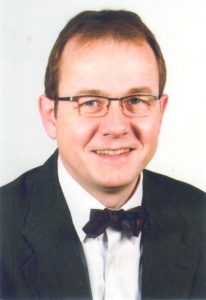
Ingo Gaspard
Bio: Since 2009 Ingo Gaspard is professor at Darmstadt University of Applied Sciences and is teaching courses in RF/microwaves, antennas, radar, EMC, fields & waves and measurement technology. Prior to this position he was working with Deutsche Telekom and subsidiaries for more than 15 years in the areas of planning, operation and validation of mobile radio systems, international standardization bodies and corporate research in mobile radio and broadcast systems. Ingo was working as expert and project manager in many national and international/EU funded research projects during that time. Educated at the Technical University of Kaiserslautern he holds a Dipl.-Ing. degree from there and a Ph.D. degree from Technical University of Darmstadt. He is regularly active as a reviewer for IEEE Antennas & Propagation society, member of URSI, commission C, member of the editorial board of journal “FREQUENZ” and holds more than 10 patents.
Abstract: Next decade will encounter a 1000-fold increase in capacity demand for wireless communications systems which will not be supported by microwave band below 6 GHz where most wireless technologies operate today. Besides reducing cell size and applying enhanced signal processing the use of new frequency spectrum above 30 GHz i.e. at mm wavelengths especially for indoor scenarios is suggested. In order to design communication systems at these frequencies in an optimal way a sound knowledge of the radio channelproperties is mandatory.When increasing frequency, building material surfaces, like walls, which interact with the wave travelling from transmitter to receiver start to be rough with respect to the wavelength and propagation mechanisms like reflection becomes more complicated because besides scattering into diffuse directions depolarization of the impinging wave takes place. Starting with measurement results from an extensive measurement campaign at868MHz ISM band taking into account polarization effects this talk will present results on different combinations of antenna polarization at TX and RX end in order to mitigate fading effects in smart home applications. In order to further validateand investigate thisconcept the implementation and parameterization of a ray tracing system level simulation tool is described and simulation results show clearly average advantages over a number of different links in a given scenario by using the combination of a linearly and a circularly polarized antennasat the two ends of each communication link in the envisaged smart home indoor application.As the next topic of this talk a vector network analyser based measurement system including the design, implementation and measurement based characterization of two different conical horn antennas for the 38 GHz band is described. Based on this system the realization and evaluation of an indoor measurement campaign where scattering experiments at a typical slightly rough indoor wall are carried out is reported. Further a simulation approach parameterized by these measurement results for investigation of depolarization caused by single scattering at slightly rough surfaces at 38 GHz based on the geometric optics (GO) approach to solve Kirchhoff’s approximation is presented. Scattering surfaces are modeled by two-dimensional random Gaussian height distributions characterized by correlation length and standard deviation. At each surface element of the rough surface the impinging wave is decomposed into one component parallel to the plane of incidence and one perpendicular to the plane of incidence. For each of the two components Fresnel reflection coefficient –which is in general different for the horizontal and vertical polarized part of the wave with respect to the local coordinate system of the surface element -is applied and the resulting wave into the direction of receiver is calculated in global coordinate system. At an arbitrary receiver position the partial waves of all surface elements forming the rough surface are coherently addedaccording to polarization. Weighting of the transmitted wave field as well as of the received wave field according to realistic, measured antenna pattern is also applied. The described simulation approach allows for a complete description of the polarization properties of the received signal according to Mueller matrix. Simulation results for different parameter sets like incident/scattering angle, frequency, roughness, polarization of field incident at rough surface etc. will be given and show that there is a significant depolarization –seen by an increased cross-polar ratio after reflection –even for surfaces with rms height variation as low as 0.1 mm.
Keynote speaker 2
Cloudy, Foggy and Misty Computing for Time-Critical Applications
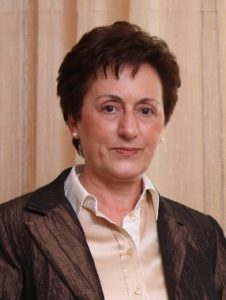
Helen D. Karatza
Bio: Helen D. Karatza (senior member of IEEE, ACM, SCS) is a Professor Emeritus in the Department of Informatics at the Aristotle University of Thessaloniki, Greece. Dr. Karatza’s research interests include cloud, fog and mist computing, energy efficiency, fault tolerance, resource allocation, scheduling algorithms and real-time distributed systems. Dr. Karatza has authored or co-authored over 240 technical papers and book chapters, including seven papers that received the best paper award at international conferences. She served as an elected member of the Board of Directors at Large of The Society for Modeling and Simulation International. She served as chair and keynote speaker in international conferences. Dr. Karatza is the Editor-in-Chief of the journal “Simulation Modelling Practice and Theory” (Elsevier), an Editor of “Future Generation Computer Systems” (Elsevier), an Associate Editor of “IEEE Transactions on Services Computing” and an Editor of “Cluster Computing” (Springer). She also served as Editor-in-Chief of “Simulation Transactions of The Society for Modeling and Simulation International”, Associate Editor of “ACM Transactions on Modeling and Computer Simulation” and Senior Associate Editor of the “Journal of Systems and Software” (Elsevier). She served as Guest Editor of Special Issues in several international journals. More info about her activities and publications can be found at: https://users.auth.gr/karatza/.
Abstract: The exponential growth of the Internet of Things (IoT) applications contributed to the rapid development of smart environments, thus making the traditional Cloud computing inefficient for transferring the enormous volume of data generated by IoT devices. As a result, Fog and Mist computing have emerged as new computing paradigms to solve the problem of transmission latency by placing computations in the vicinity of the IoT layer. Typically, IoT applications are time-critical and the primary concern is meeting their deadlines. Consequently, the utilization of appropriate resource allocation and scheduling strategies for real-time applications in multi-tier environments is of paramount importance. In this keynote we will discuss research directions driving the development of these new computing models. Furthermore, we will present and analyze novel techniques addressing the challenges in resource allocation and scheduling in cloud, fog and mist computing environments.
Keynote speaker 3
Security and Privacy Solutions for Electric Vehicle Charging
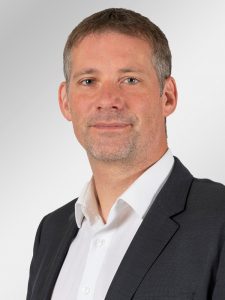
Christoph Krauß
Bio: Prof. Dr. Christoph Krauß is full professor for Network Security, spokesperson of the IT Security expert group, and head of the research group Applied Cyber Security Darmstadt (ACSD) at Darmstadt University of Applied Sciences. Furthermore, he is Head of Automotive Security Research at INCYDE GmbH, which he co-founded. At the National Research Center for Applied Cybersecurity ATHENE, he is Principal Investigator and coordinator of the research area Secure Autonomous Driving. He has over 15 years of experience in IT security. His research and interests include automotive security and privacy, railway security, intelligent energy networks security, trusted computing, network security, efficient and post-quantum cryptography, and security engineering.
Abstract: In this talk, I present security and privacy threats to electric mobility, as well as possible security solutions. First, I present the current state of the art. This includes the actors involved, communication relationships, and protocols used. Then, I discuss possible threats and shortcomings in terms of security and privacy. Finally, I present some solutions to protect against selected threats.
Keynote speaker 4
Resonance scattering and cloaking: unified mathematical approach and model
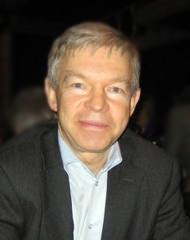
Yury Shestopalov
Bio: Yury Shestopalov is now professor of mathematics at the University of Gävle, Sweden. He accomplished complete university career from teaching assistant to professor and department head at Moscow State University (MSU), Karlstad University and University of Gävle (since 2013). Y. Shestopalov has been continuously teaching (since 1977) all university courses in mathematics. In 1992-1993 he created and then was head of the department of computer science at the MSU Kolmogorov Advanced Education and Science Centre (AESC)—The Kolmogorov School. His main scientific contributions are within spectral theory of operators and its application in mathematical methods for electromagnetics; methods of solution to inverse problems and problems with uncertain data; wave propagation in nonlinear media and nonlinear operator equations; integral equations, partial differential equations; numerical methods, optimization, applied computer codes. Y. Shestopalov has authored and co-authored five books, also published in USA and UK, more than 80 articles in peer-reviewed journals and in total more than 240 scientific works. He supervised several PhD works; among his disciples there are active professors in mathematics, applied mathematics and electrical engineering. Y. Shestopalov performs international cooperation as visiting professor and coheads international research projects with several institutions in Sweden, USA, Japan, Germany, Finland, Russia, and Ukraine. Since 1977 Y. Shestopalov organized more than 20 and participated in more than 60 international conferences and symposia.
Abstract: We consider eigenvalue problems for dielectric cylindrical scatterers of specifically circular and arbitrary cross sections with generalized conditions at infinity. The problem statement enables one to take into account complex eigenvalues. The existence of resonance (scattering) frequencies associated with these eigenvalues is proved using the developed approach.
The technique involves determination of characteristic numbers (CNs) of the Fredholm operator-valued functions of the problems constructed using Green’s potentials.
Separating principal parts in the form of meromorphic operator pencils we apply the operator generalization of Rouche’s theorem to verify the occurrence of CNs in close proximities of the singularities of the pole pencils. The results are illustrated using the case of a dielectric cylinder of circular cross section.
Next, we develop a technique that allows one to obtain explicitly the parameter sets for canonical structures of circular or planar symmetry at which resonance scattering or partial invisibility are observed. The approach employs analysis of the solution expansion coefficients considered as functions of the problem parameters.
Keynote speaker 5
Glide symmetries: a new degree of freedom for the design of periodic structures
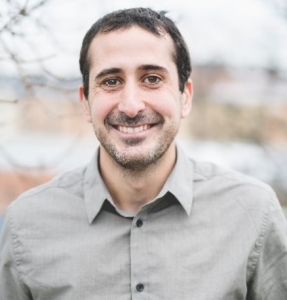
Oscar Quevedo-Teruel
Bio: Oscar Quevedo-Teruel is a full professor in the School of Electrical Engineering and Computer Science at KTH Royal Institute of Technology, Stockholm, Sweden, and director of the Master Programme in Electromagnetics, Fusion and Space Engineering and responsible of the Antenna Laboratory. He has been an Associate Editor of the IEEE Transactions on Antennas and Propagation since 2018 and is the founder and editor-in-chief of the journal Reviews of Electromagnetics since January 2021. He was the EurAAP delegate for Sweden, Norway, and Iceland from 2018-2020 and he has been a member of the EurAAP Board of Directors since January 2021. He is a distinguished lecturer of the IEEE Antennas and Propagation Society for the period of 2019-2021 and Chair of the IEEE APS Educational Initiatives Programme since 2020. He has made scientific contributions in the fields of lens antennas, metasurfaces with higher symmetries and transformation optics. He has co-authored over 100 papers in international journals, over 160 at international conferences, and has received approval on 3 patents.
Abstract: Glide symmetries were employed for electromagnetic purposes during the 60s and 70s. Those works were focused on one-dimensional structures with potential application in low-dispersive leaky wave antennas. However, the development of planar/printed technologies in the 80s and 90s associated to their low-cost for low-frequency applications, the studies of glide symmetries stopped.
In the beginning of the 21st century, with arrival of metamaterials, there was a significant development of the understanding of periodic structures, and new methods of analysis were introduced. This theoretical development, together with the interest of industry in mm-waves, particularly for communications systems such as 5G/6G, created an opportunity to explore the possibilities of glide symmetries, especially in two-dimensional configurations.
Glide-symmetric structures has recently attracted the attention of researchers due to their attractive properties for practical applications. Among their interesting properties are low-dispersive responses in fully metallic structures such as parallel plate or co-planar waveguides (CPW), bandgaps associated to the symmetries and large electromagnetic bandgaps (EBGs).
In this talk, I will describe the most significant works in glide symmetries, including their application for the design of gap-waveguide technology and planar lens antennas with steerable angles of radiation.
Keynote speaker 6
The evolving world of cyber-operations
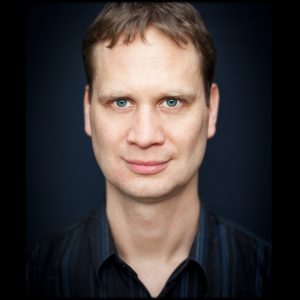
Olaf Maennel
Bio: Olaf Maennel is a professor of Cyber-Security at Tallinn University of Technology in Estonia at the Centre of Digital Forensics and Cyber Security. Before that, he was with Loughborough University in the UK and the University of Adelaide in Australia. He has been general co-chair of ACM SIGCOMM 2015 and ACM IMC 2017. He has a background in computer networks from the Technical University in Munich, where he graduated in 2005. His current research interests include network security, critical transportation infrastructure protection (specifically in maritime and aviation), and cyber-security education.
Abstract: “Cyber”, as the 5th domain of warfare, is getting more awareness recently. Our unpreparedness is also becoming apparent. In this talk, we will revisit some recent developments in the sector and discuss the underlying fundamentals of the problems we are seeing. How can we increase our cybersecurity posture as individuals and organisations? Simple cybersecurity awareness changes, combined with some common sense and essential critical thinking, can already bring us quite far. We will discuss some examples of offensive methods and understand how to build the required defensive culture.

